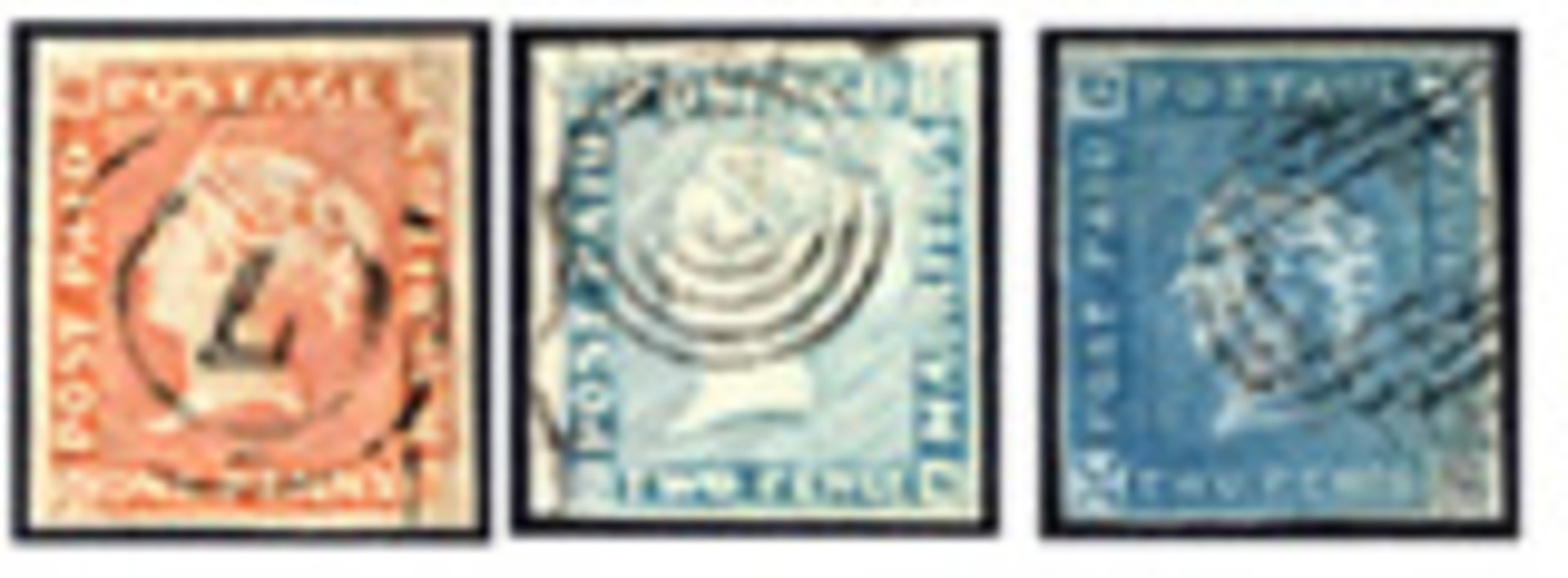As history tells us that early in 1904 one of the Prince of Wales's equerries commented to the future King that did he happen to see in the newspapers that some damned fool had given as much as £1,400 for one stamp?
Unfortunately for the equerry, "I was that fool", came the response.
The stamp in question was the 1847 Two Pence blue of Mauritius, in premium unused condition. At the time, it was the highest price ever paid for a stamp. There was no shortage of potential buyers for this already famous classic, and later the same year the Prince bought an example of the One Penny orange- red still on an original envelope, which had contained an invitation to Lady Gomm's ball. It is believed that the printing of the first Colonial postage stamps had been rushed in time for the ball invitations, in order to make the envelopes into charming curiosities.
The Colonial Postmaster asked the miniaturist and engraver Joeseph Barnard, who had arrived on Mauritius many years before as a stowaway, to quote for engraving plates and supplying finished one penny and two pence stamps.
For this first issue, Barnard probably used the well-known image of the young Queen produced by William Wyon for the City of London Medallion. Strangely and famously, the words 'POST OFFICE' appeared on the stamps. When a year later in 1848 a new design appeared, again engraved by Barnard but with 'POST PAID' in the design, it was widely assumed that the first design had been in error, but yet Barnard was probably copying the current post mark which read 'Mauritius / Post Office'.
There followed a twelve-year period until late 1859, when Mauritius produced some of the most primitive yet atmospheric stamps of the British Empire . Starting with the 1848 issue, Barnard engraved a plate of twelve for each value, so that each stamp was different. As time passed and the plates wore, collectors now recognise five stages of wear, from the Earliest Impressions showing deep, sharp engraving lines – through to the so-called Latest Impressions where the stamps are barely discernable! We advise buyers to research these impressions (SG 3 – 25) as we often find stamps identified incorrectly in collections. The notes supplied in catalogues however, are no substitution for seeing the real thing.
By 1858 the plates had worn so badly (the 'Latest Impressions' SG 23 - 25) that Robert Sherwin, the Keeper of the Prison, who had also undertaken some departmental engraving, was subsequently asked to repair the 2d plate. He returned the plate unfinished shortly afterwards. Then Jules Lapriot, an actor-cum-engraver, offered to produce a new plate for £10. The resulting stamps from this new plate (SG 36 - 39) have been described as 'the greatest libel on Queen Victoria ever perpetrated on a postage stamp'; on the island they became known as the 'Two Pence Mozambiques' and later as 'Libel Labels'. In our opinion the stamps appear to show the Queen in a hurricane!
The plates returned by Sherwin were found and reworked, the 2d value was deemed usable and the stamps were issued in October 1859 (SG 40). They were not used for long however, as the last of what could be called the 'primitive' stamps, were issued in December. These 1d and 2d stamps (SG 41–44) were lithographed by Louis Dardenne and were a valiant attempt to mimic the smaller British stamps of the period.
The next year, a new, more sophisticated issue arrived from De La Rue in England, which ended a unique period of Colonial philately.


 General
General
 General
General
 General
General